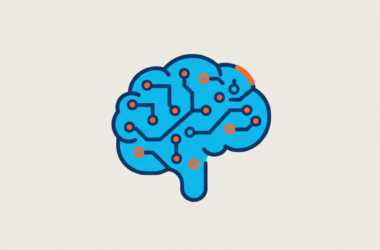
OpenAI has recently unveiled an innovative suite of audio models integrated within its API, presenting a significant opportunity for developers worldwide to enhance voice agent applications. These cutting-edge models are designed to support natural spoken interactions and enable users to engage with agents using dynamic, real‐life speech patterns.
This new offering builds on OpenAI’s legacy of advancing intelligent, text-based agents by addressing the growing need for more intuitive voice communications. In particular, the new speech-to-text models deliver state-of-the-art transcription performance, effectively handling challenges such as diverse accents, noisy backgrounds, and rapid speech. Their improved word error rate (WER) and enhanced language recognition set a new benchmark against previous solutions.
Developers now have access to the gpt-4o-transcribe and gpt-4o-mini-transcribe models that have undergone rigorous reinforcement learning and midtraining with extensive, high-quality audio datasets. This robust training enables the models to accurately capture nuances in speech, resulting in more reliable transcriptions even in demanding scenarios. Detailed information about these capabilities can be found on the speech-to-text API documentation.
In addition to speech recognition, a new text-to-speech model has been introduced, which offers unprecedented steerability. For the first time, developers can instruct the model on not only what to articulate but also how to deliver the message. This functionality allows for a rich spectrum of customizations, supporting applications from empathetic customer service interactions to expressive storytelling. While the model currently includes a selection of predefined synthetic voices, its flexibility paves the way for highly personalized voice agent experiences. More detailed guidelines are available on the text-to-speech API page.
To illustrate the breadth of customization, developers can choose from a variety of voice characterizations, including:
- Calm
- Surfer
- Professional
- Medieval knight
- True crime buff
- Bedtime story
Underlying these innovations are several technical advancements. The models leverage the GPT‑4o and GPT‑4o-mini architectures and have been pretrained on specialized, audio-centric datasets, which significantly improves their performance in audio-related tasks. Enhanced distillation methodologies and a reinforcement learning paradigm further contribute to reducing transcription errors and capturing realistic conversational dynamics. Such innovations not only amplify the models’ overall efficiency but also ensure they remain competitive in complex speech recognition environments.
The new audio models are now available to all developers, making it easier than ever to incorporate voice functionality into existing conversational systems. An integration with the Agents SDK simplifies this process, and for those interested in low-latency speech-to-speech experiences, the Realtime API offers a powerful solution. Additional insights on utilizing these tools can be accessed via the audio guide.
Looking forward, OpenAI is committed to further refining the accuracy and intelligence of its audio models. Future developments will explore the potential for enabling developers to bring their own custom voices into applications while upholding rigorous safety standards. Moreover, continued engagement with policymakers, researchers, and industry creatives will help navigate the challenges and opportunities associated with synthetic voices, as the company expands its reach into other modalities such as video to foster truly multimodal experiences.
Additional resources, including hands-on demos and detailed documentation, are available to help developers start building their next-generation voice agents.
For those eager to explore these advancements, try the new resources on openai.fm and learn more about the development process on the relevant API documentation pages.






